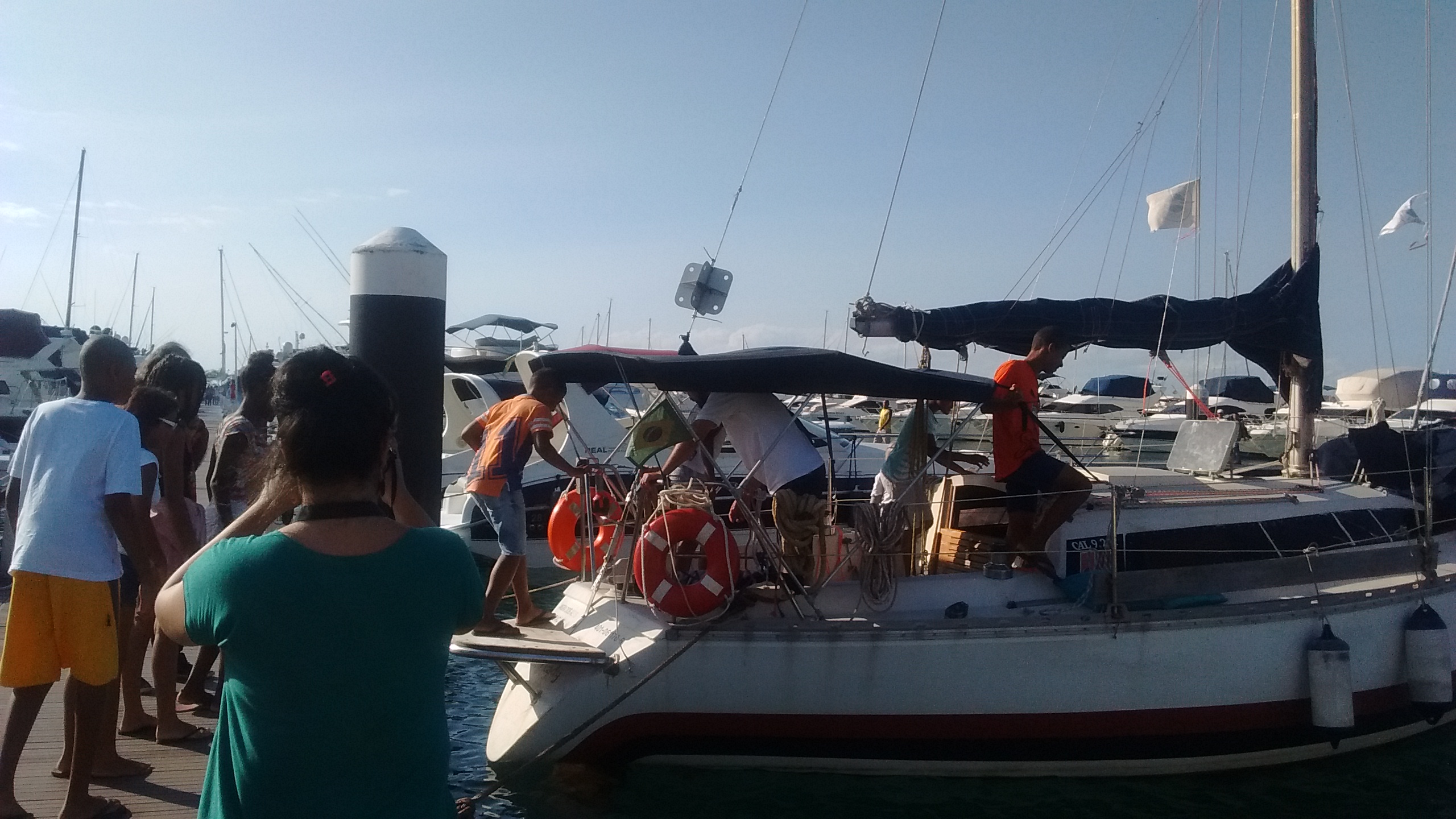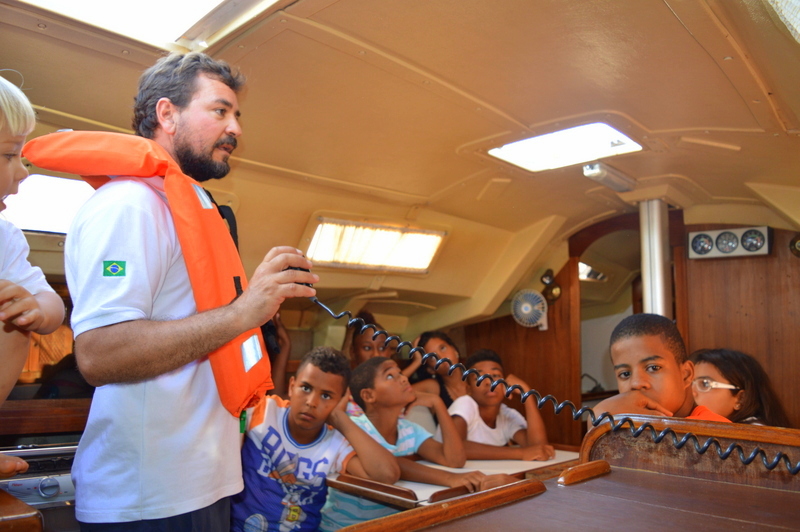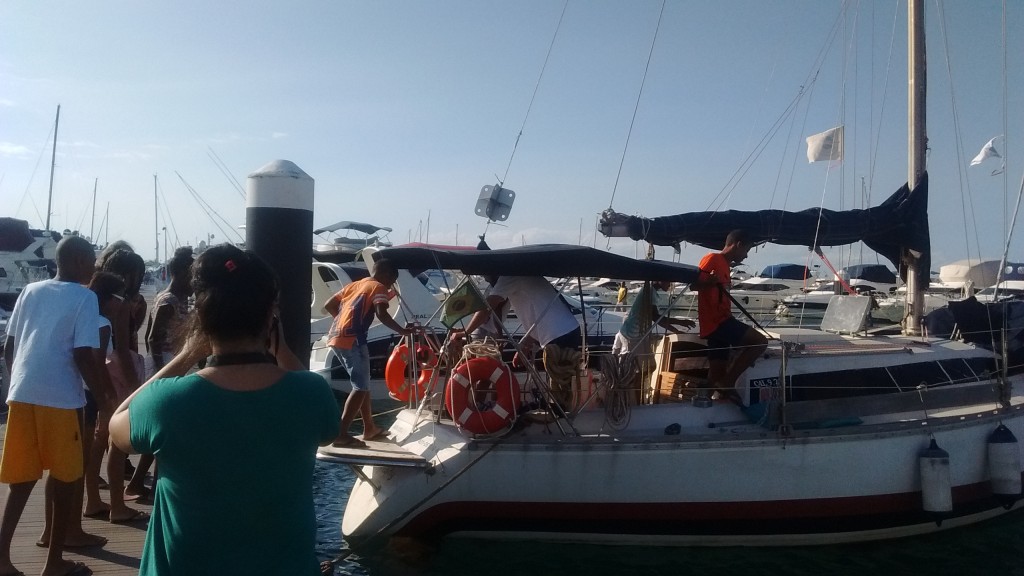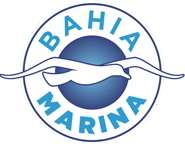
How is a sailboat inside? How does it work? How many people can navigate in it? Those and many other questions were made by the young people from the Social Communication and Environmental Education Program while visiting the Lucky Lady sailboat, 30 feet, anchored in Bahia Marina. Their curious eyes looked over the boat and met all navigation and communication instruments and its rooms.
Lucky Lady guided the kids through the first scientific bioacoustic sailing expedition that studied, for the first time, the singing of the humpback whales, migratory flagship species that comes to the Bahia coast during reproductive period. Aiming to contribute with the marine preservation, the sound monitoring with a hydrophone and a digital recorder was done from Salvador to the Abrolhos Marine Park.
Before the visit to the sailboat, the participants watched a lecture with two members of the expedition, biologist Daniel Lewis and Taís Bemfica, about the mapping of the humpback whales through their sounds. At that moment, the public could listen to the singing of the whales through recordings done by the crew during the expedition.
Enzo Ricardo Freitas, 13 years old, enthusiastically talked about the experience to get to know the project. “I really liked the project and the lecture. I thought really interesting the care for the crew and I noticed a lot of responsibility on the captain. The interesting thing is that everyone could fit in there along the whole trip. I loved to listen to the whale sounds during the presentation and I really would like to navigate with them one day.”
According to the biologist Taís Bemfica, such initiatives transform young people´s life, arousing interest for the nautical culture and for the marine environment preservation. “This values the citizenship, turning people into more conscious and responsible citizens when it comes to their rights and duties”, she says.
This survey is conducted by Bemfica Expedições and sponsored by Cetacean Society International, Bahia Marina and Belov Engenharia. In Abrolhos, the crew was supported by the Brazilian Navy and the Humpback Whale Institute (IBJ), in Caravelas.






